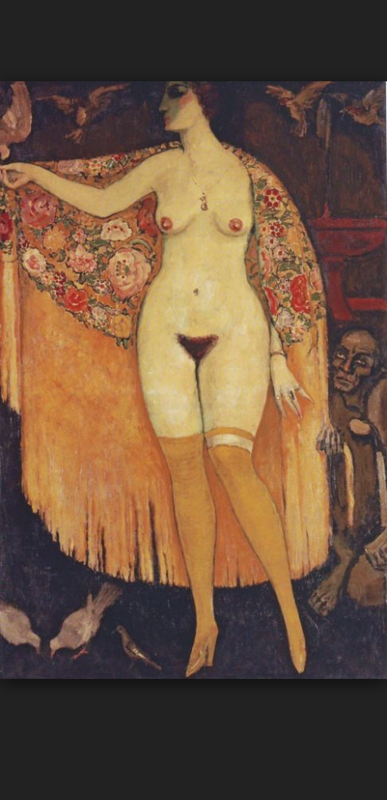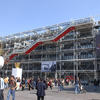More about Tableau

Sr. Contributor
Sometimes, love is painting your wife as she flashes a vagabond.
Although it's not like Kees van Dongen and Guus, his first wife pictured above in the buff, had a fairytale romance. Their meet cute as classmates in the Royal Academy of Fine Arts Rotterdam accelerated into marriage and a life in Paris so van Dongen might finally succeed as a painter. The whole "professional artist" thing was uncertain at first, as the only job Kees could immediately land was as an illustrator for some satirical journals. The salary barely kept the family afloat. Soon, Guus was pregnant and bore a daughter they named Dolly. Pressures mounted daily for van Dongen to get his big break beyond his paltry paycheck-to-paycheck gigs. But all that van Dongen could muster was trading the sailors and prostitutes he painted for practice during school in Rotterdam with Parisian circus folk and poor actors. That is, he was yet to see a real payday.
But a move to Montmartre allowed Kees and Guus to schmooze with none other than Pablo Picasso and his crew. Having the right friends opened doors for van Dongen, their support offering his career the boost it needed to get his work in exhibitions alongside the likes of modern maestro Henri Matisse. Guus played the part of model and muse to her husband as his new friends illuminated the way for his career. However, in 1913, the conservative portion of Parisian society was aghast over the latest creation from the hand of van Dongen which depicted Guus in the buff: the infamous Tableau.
Tableau debuted at the 1913 Salon d'Automne alongside the work of many luminaries from the Parisian art scene. The show had barely opened when the Arts Undersecretary and the Chief of Police in Paris confiscated Tableau as an obscene work. These and other conservative authorities believed Tableau represented such a big threat to public morals that it should be locked up in a black box and never again released. One of their material issues with the painting was that illumination resembled the spotlight that followed prostitutes in the midst of a strip show in Paris's legalized brothels. The fellow with crutches in the painting's corner could be either some bum getting a free show or the woman's intended audience. Either way, everyone understood they were viewing a "real woman's" privates in the midst of some kind of prostitution. As opposed to, for instance, other contemporary depictions of nude women masquerading as mythological figures. It also didn't help that the lucky guy appears to have crutches and, therefore, some disability. Parisian society, at the time, was in the middle of a complicated, if stilted, debate over just how the public wanted to engage with sexuality. Real life nudity felt too real for a society that had convinced itself that the undressed body needed a reason to be nude, no matter how transparent. Real life nudity that implied a disabled person might get aroused was just too much for people way back then.
A flurry of letter writing variously supported and vilified the authority's decision to confiscate Tableau The committee behind the Salon d'Automne (likely in a bid to smooth things over) applauded the Undersecretary's and Chief's efforts. Van Dongen wrote a letter that outlined how his right as an artist and member of the Salon had been violated. He was far from the only one. The staff of major newspapers and artists of all ranks across Paris sent letters as an inky flood of condemnation against the decision to confiscate.
Ultimately, Tableau was returned to van Dongen. The attention from this fiasco in concert with a hip, fauvist style brought an unending slough of commissions that lasted for virtually the rest of his life. However, authorities were neither done hounding van Dongen nor Tableau for perceived moral defects. The painting was withdrawn from view at an exhibition in the Museum Boijmans Van Beuningen in 1949 because authorities in Rotterdam, van Dongen's hometown, couldn't hack the documentary-like nudity. Afterward, the painting fell into Guus's possession. She donated it to the Georges Pompidou Center where it resides today.











